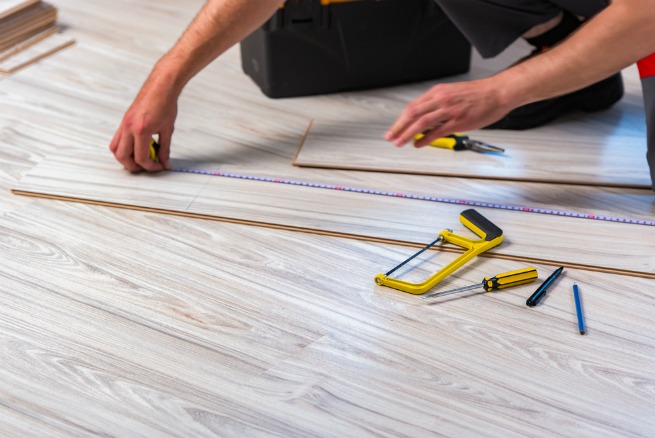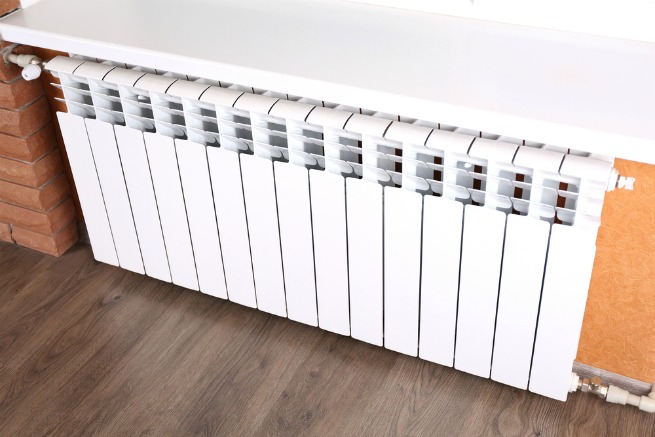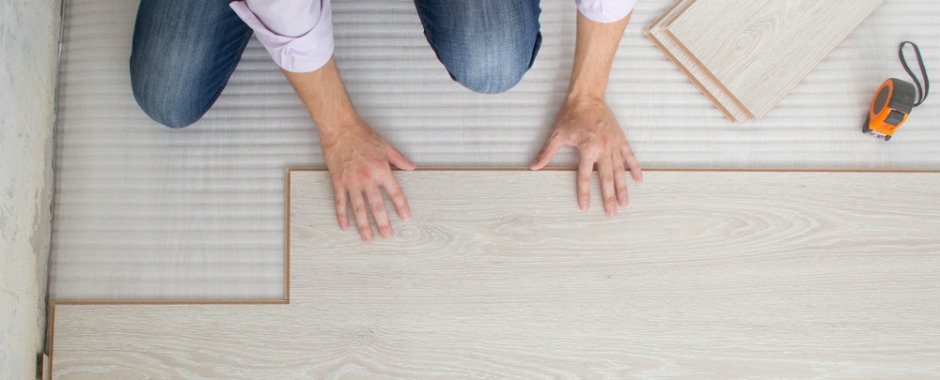Once you've decided on the perfect flooring solution for your home it's time to install it. Most flooring options are relatively simple to fit and are optimised to make it easier for you to do so with click or tongue and groove styles. However, sometimes you need an extra hand to guide you. If you want to know how to cut around radiator pipes, we've got you covered. If you've decided to fit your floors yourself rather than pay for someone to do it for you then we've got everything you need to know to attain the floor of your dreams.
How to install your floor
When fitting a floating hardwood floor you need to leave an expansion gap around the room so the floor can move as necessary. This is due to changes in the floor’s size over the course of a year such as expansion and contraction in response to the changing atmosphere in a room. The manufacturer will usually give you details on how much gap to leave, but it’s usually in the region of 10mm to 15mm. The gap is left all around the room and also helps to avoid things that may come through the wooden floor, such as radiator pipes.

Related: How to Measure Your Floor
How to cut around radiator pipes
It can be tempting when fitting a hardwood floor to drill a hole that is the perfect size for a radiator pipe to pass through. The finish will look good and you won’t have to cover any rough edges or hide the hole in any way. However, this can be a big mistake.
An expansion gap should always be left around radiator pipes so the floor can move. If the floor moves a lot and the hole you have drilled is not big enough, the pipe can burst in extreme situations. Most radiator pipes are 15mm in diameter so using a 25mm hole saw should suffice. Fit some pipe roses over the pipes to hide the hole after the floor has been fitted. This will give a professional finish.

Once you've drilled your hole to accommodate the radiator pipes you then need to make a way in which to slide the board around the pipe. To do this make out a 15-degree wedge that extends from the edge of the board to the drilled hole. Neatly cut down these lines with a fine-tooth saw and fit the plank around the radiator pipe. Cutting laminate flooring like this can be tricky, so be careful. Once you've put the plank in place, push the wedge back in with some glue to secure it in place.
How to navigate awkward floors
Curved floors in homes aren't incredibly common but they do exist. If you're one of the lucky few with such a unique feature, then chances are you're having nightmares about cutting flooring. First of all, trace the curve of the wall by pushing a piece of paper against it and removing the excess. You'll be left with the shape your boards will need to be cut to. Next, lay out the number of boards you'll need to fit the curve and place the paper with the shape over them.

Use a pencil to make the shape as close to the edge of the boards as you can so that you don't waste any wood. The best tool for cutting laminate in this instance is a jigsaw as it is easy to manoeuvre. Cut the planks into the correct shape and then fit them by using the board that's closest to the curve of the wall first.
Related: How to Install Skirting Boards
We hope this has helped you to navigate some of the trickier aspects of fitting your floor! If you need more guidance then call 0330 100 00 15 to speak to one of our flooring experts.
